
ISSUE N O 18 • SPRING 2018 CLUB ROAD A Chambers Publication Plus p .12 MEET THE MANAGER with Jeff Hartigan, GM/COO The Oaks Club, FL What’sInside? 2 / Poolside Necessities 8 / New Age Health & Wellness 10 / Understanding the GM/COO Model of Management 11 / Your Bar Talks—But what is it saying? Rolling Green Golf Club, PA STRATEGIC PLANNING: IS IT REALLY WORTH IT? p.4
Friends —
Those warm summer days are just around the corner! As club leaders, you know your members are looking for an active, social retreat in the months ahead. From poolside enhancements to clubhouse bar improvements to inventive fitness programs and facilities, this issue dives into topics that can help you create the summer oasis they desire.
We also focus on a key element of club success—strategic planning. What is it? Why do it? We offer insight into how to set strategic direction and make real change. And while we’re at it, we’ll get down to business discussing the General Manager/COO model of management and introduce you to another individual we admire as part of our Meet the Manager series.
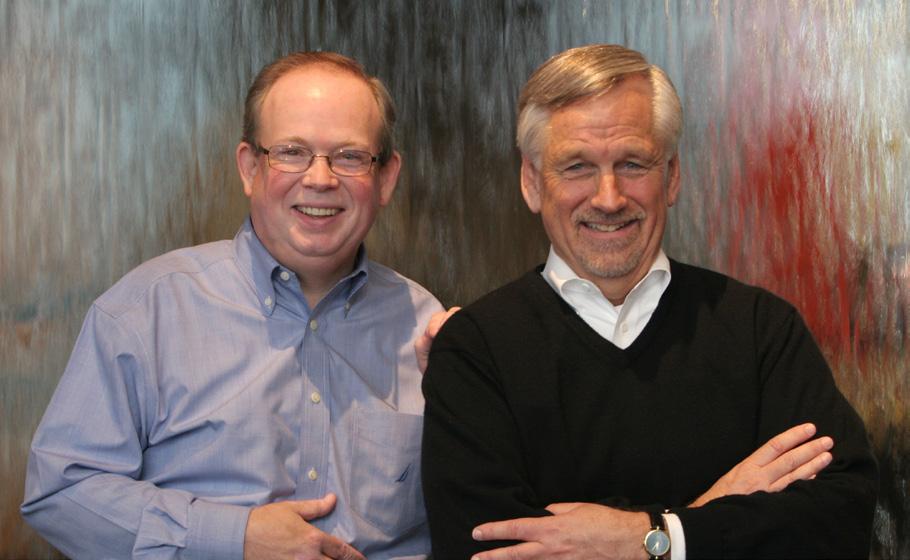
And as always—email us with your thoughts or ideas on what you’d like to see in future issues of Club Road!

SPLASH INTO SUMMER
WITH THESE FIVE POOLSIDE NECESSITIES
With the unofficial start of summer behind us and plenty of warm, sunny days ahead, many clubs across the country are gearing up for families to spend much of their time at one area of the club in particular—the pool!
Today, pool facilities play an important role in enhancing membership value and are one of the top reasons families decide to join a private club. While there are many (often costly) ways clubs can improve the pool area, there are also several opportunities to implement cost-effective elements that can drastically improve the overall poolside experience without breaking the bank. Let’s dive right in!
Rick Snellinger Bob Hickman President & CEO Chairman of the Board
EMAIL RICK EMAIL BOB


FEATURED
A NOTE FROM CHAMBERS CLUB ROUNDUP
CHAMBERSUSA .COM 2 ] BALTIMORE / DALLAS / MINNEAPOLIS / DC CONNECT:
CLICK HERE TO READ THE FULL ARTICLE
Interactive Splash Pads
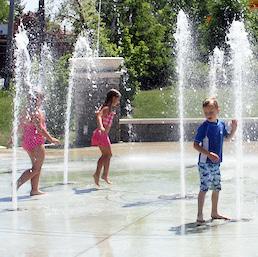
An interactive way to add resort-style fun—and with ROI in mind, these aquatic play areas are a valuable alternative to baby pools of the past. Read more >>
Focus on the Pool Deck
Shade structures, poolside dining, and on-demand drink services are sure to create the dynamic poolside experience members desire. Read more >>
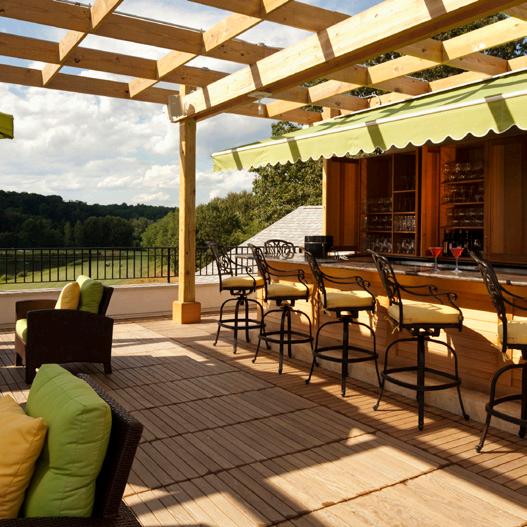
Elevate the Snack Bar
Supplement traditional Snack Bar staples with expanded menu options to enhance the poolside dining experience and complement your F&B department.

Read more >>

Let Them Mingle
Members want to spend time with their families and also have opportunities to socialize with their friends. Read more >>
There are many ways to incorporate creative events throughout the club, and the pool experience should be no exception! Read more >>
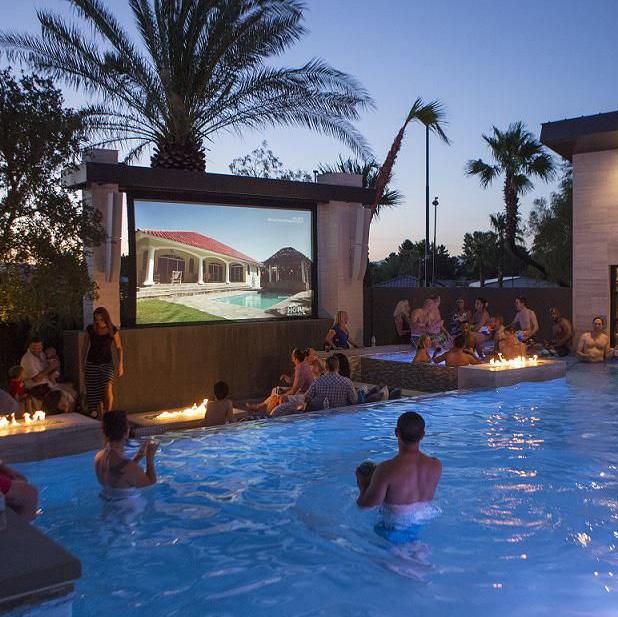
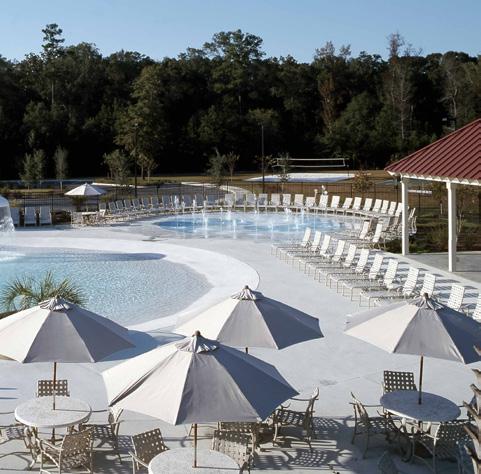
FEATURED CLUB ROAD Issue No 18 / Spring 2018 CLUB ROAD is a Chambers publication. Editor-in-Chief / Creative Director: Lauren Gordon clubroad@chambersusa.com 410.727.4535 2 Club Roundup Poolside Necessities 4 Feature Strategic Planning: Is it Really Worth It? 8 What’s Trending? Why Fitness/Wellness Facilities are a ‘Must’ in Private Clubs 10 Down to Business Breaking Down the GM/COO Model of Management 11 Club Experience Your Bar Talks—But what is it saying? 12 Meet the Manager with Jeff Hartigan PLANNING • ARCHITECTURE INTERIOR DESIGN • PURCHASING CHAMBERSUSA .COM CLUB ROAD GET IN TOUCH! CLUBROAD@CHAMBERSUSA.COM / 410.727.4535
Implement Creative Programs
STRATEGIC PLANNING: IS IT REALLY WORTH IT?
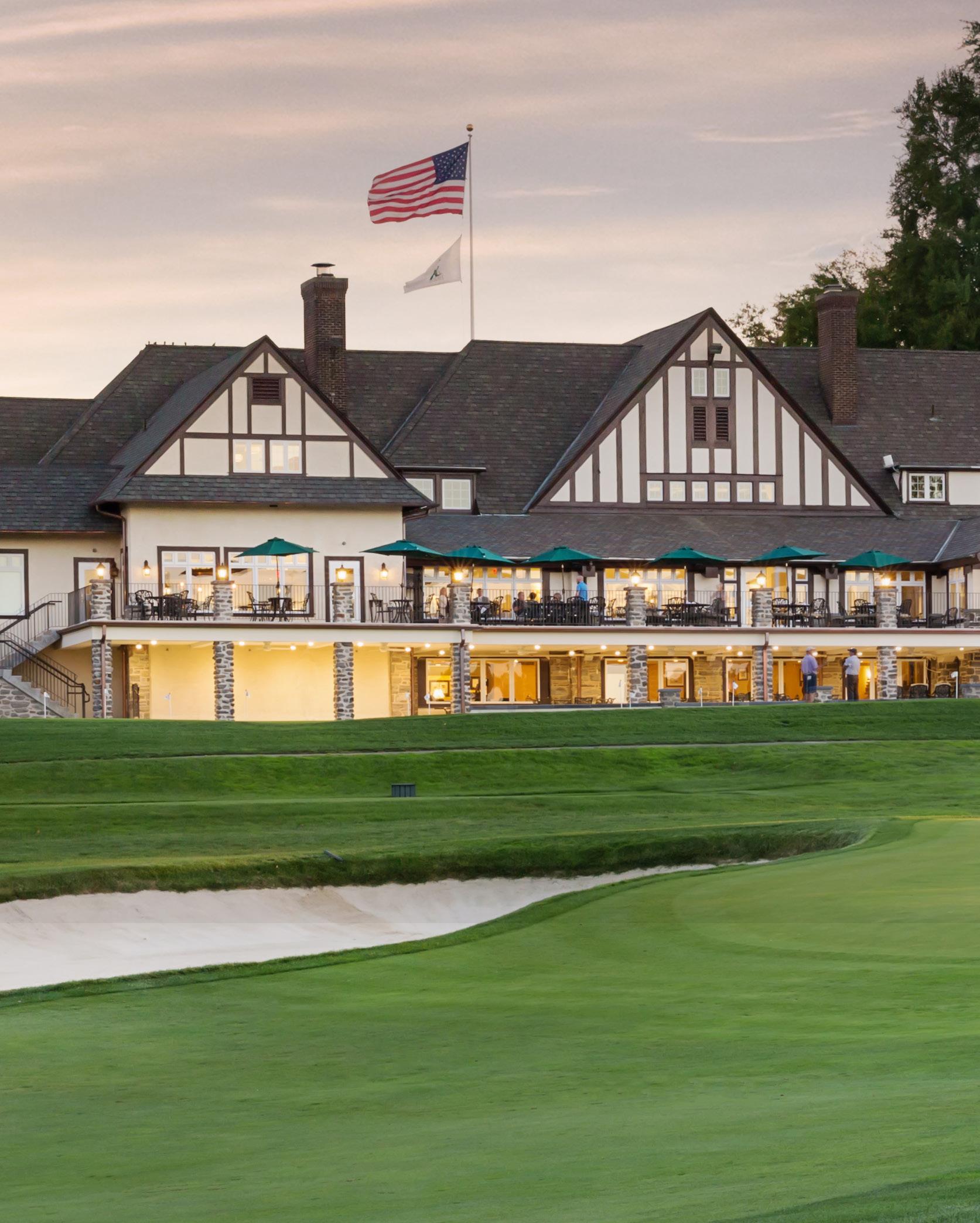
/ CLUBROAD ISSUE 18 / SPRING 2 018 FEATURED C LUBVIEWBLOG.COM 4 ]
Rolling Green Golf Club Philadelphia, Pennsylvania
Theprivate club industry is abuzz with talk of the continuous need to evolve to meet the ever-changing needs of members. New programs, re-imagined spaces, inventive services— there are numerous ways to brighten the appeal of a club membership for today’s modern member while continuing to respect history and traditions of the past.
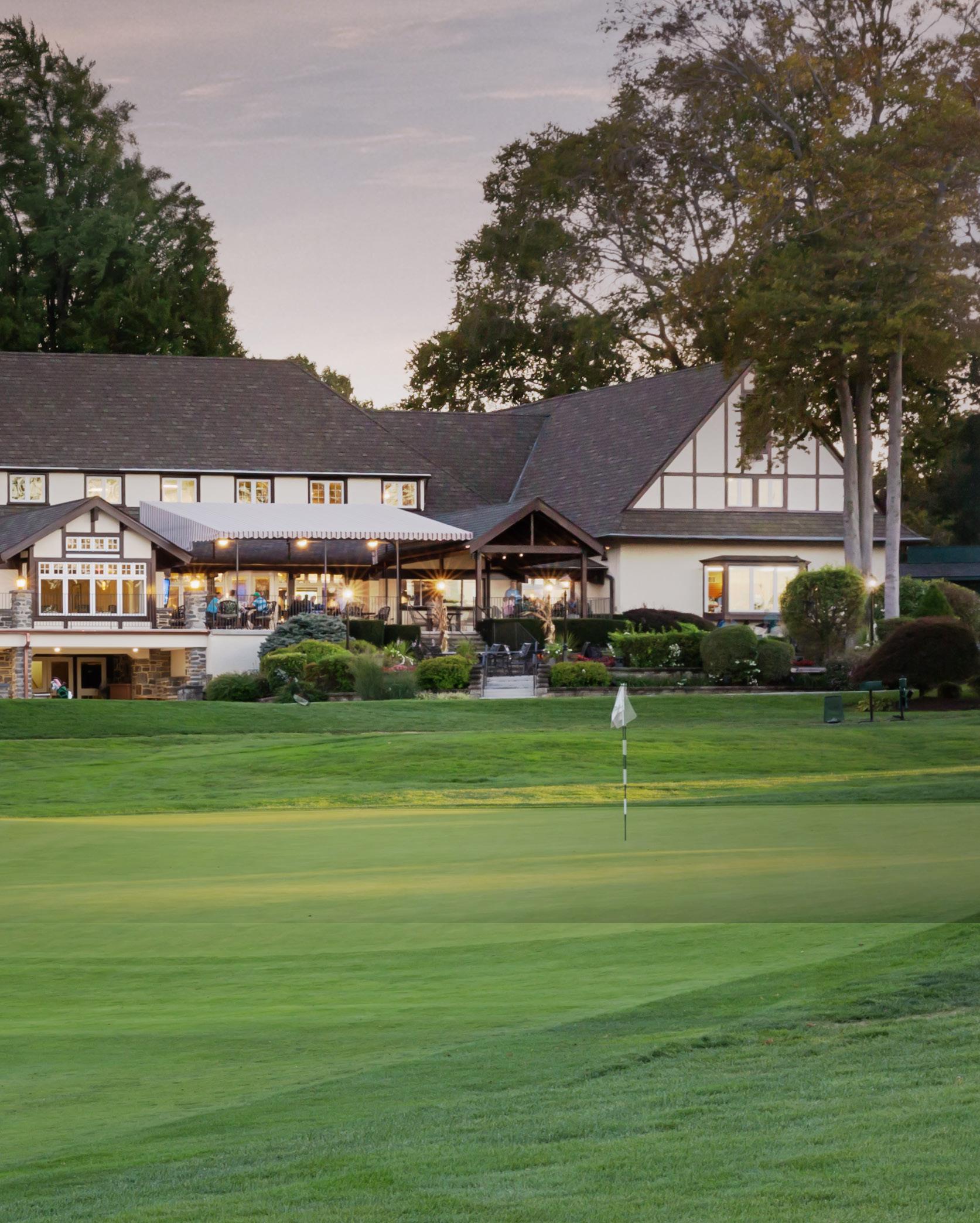
But where are we going, exactly? What is the purpose or driving force behind these decisions? As clubs brainstorm new activities and reinvent the traditional private club experience, club leaders must first take pause to think about the bigger picture. What is our mission as a club? What do we hope the club will “be” in the future? And how do we get there?
CLICK HERE OR TURN THE PAGE TO READ MORE! >>
CHAMBERSUSA .COM [ 5
SOME MAY SAY THERE IS A CLEAR ANSWER: STRATEGIC PLANNING.
But isn’t that for businesses and corporate entities? Can clubs really benefit from applying the same practices to the Chef’s dining program or the club’s membership categories?
DEFINING THE TERM
By definition, strategic planning is the process of defining an organization’s strategy and making decisions on how to allocate resources to pursue this direction. Benjamin Franklin once said, “By failing to prepare, you are preparing to fail.” One wouldn’t host Thanksgiving dinner without planning how to cook the turkey or coach a football team without planning a strategy for the big game. So why attempt to run a business without first establishing a plan?
Just as any successful business needs to define a purpose and direction, so too do private clubs. And while many do not think of their private clubs as “businesses” per say, they require similar strategies and management tactics to be successful. Strategic planning helps divide larger goals into smaller, more manageable pieces. Each piece then becomes a smaller goal that is easier to accomplish, yet still stays true to the bigger picture.
Before we delve into how to define goals and execute strategy in a private club, let’s first break down strategic planning to understand the pieces. There are six key elements of an effective strategic plan— the first three establish the general direction and create the foundation, while the second three help create a tangible plan to achieve the mission/vision.
MISSION: A mission statement is a concise explanation of an organization’s reason for existence. It answers the questions of Who are we? and Why do we exist? to define its purpose and overall intention.
VISION: A vision statement describes who or what an organization strives to be in the future. It establishes an overall direction or aspirational goal to work towards.
VALUES: An organization establishes a set of guiding principles to help define its culture and guide the perspective of its leadership and employees.
TENETS: Sometimes referred to as strategies or pillars; these are the major objectives an organization intends to achieve in order to reach its vision.
GOALS: These items convert the strategic tenets into specific and measurable performance targets corresponding to each overarching objective.
ACTION ITEMS: These specific statements describe operational tasks that explain how to achieve each goal.
/ CLUBROAD ISSUE 18 / SPRING 2 018
C LUBVIEWBLOG.COM 6 ] FEATURED
3 4 5 6 2 1
In order for club leaders to be successful in strategic planning, the club experience must be evaluated holistically. Some of the most common tenets in private club strategic plans encompass topics such as governance, finances, membership, staff development, communications, facilities, and social/ recreational activities. Club leaders must then establish specific goals for how each aspect of the club experience can be enhanced—keeping the overall vision in mind at all times. To achieve these goals, clubs must develop a series of clear and actionable tactics grounded in the club’s core values.
SYNTHESIZING GOALS
There are two key ways strategic planning impact clubs. First—from a leadership and strategic thinking standpoint. “Each year, Boards change, committees change, and club Presidents change,” says Rick Snellinger, President and CEO of Chambers. “Though well intentioned, these groups often end up implementing a series of ‘projects’ year after year that address immediate needs without necessarily considering the bigger picture. A strategic plan can help establish a strategic mindset for club leadership to be sure decisions are always goaldriven rather than agenda-driven.”
Jim Avato, Strategic Planning Chair at Rolling Green Golf Club (RGGC) in Philadelphia, is all too familiar with this concept. “Our Board and committees are comprised of very dedicated and hard-working members who really have the best interests of the club at heart, but we were dealing with projects, ideas, and needs as they arose,” he recalls. “While that was alright for the short-term, we realized we really needed a planning process that could help us focus our efforts. It’s easy to get sidetracked when dealing with unexpected issues that arise and pull you away from your strategic vision...”
KEEP READING TO LEARN MORE >>
INVOLVING THE MEMBERSHIP
In addition to helping club leaders embrace a strategic mindset, strategic planning is also extremely impactful for the membership. “There are two key strategic drivers in club planning—member retention and member recruitment,” says Snellinger. “Every decision that is made in a private club should ultimately be made with the member experience in mind... If a policy change or facility improvement will not positively impact one of these two strategic drivers, club leaders should question if it is really appropriate...” Snellinger advises.
CLICK TO LEARN MORE >>
AVOIDING COMMON PITFALLS
Strategic planning can (and should) be an exciting process for private clubs, but it isn’t a task to be taken lightly. Though there are many similarities to strategic planning in business, there is one critical difference—it’s personal.
“The club is a member’s home away from home,” says Snellinger. “Members make multi-million dollar decisions every day in their professional careers, but it is different when Boards and committee members are making decisions that directly affect their family and friends.”
CLICK HERE TO READ THE REST >>
CHAMBERSUSA .COM [ 7 FEATURED
NEW AGE health & Wellness
Ensuring Your Facility Wins the Race Against Its Competition

As fitness and wellness trends continue to evolve across the globe, conversations around these amenities in private clubs do as well. Many club leaders often grapple with whether or not they should incorporate a fitness facility into their private club offerings—some are skeptical about whether their members will ever utilize the facilities; others fear there is too much competition from local area gyms and fitness clubs; and some feel the task is too daunting and it’s just not the right time for their club. These are all valid considerations and concerns—but today’s private club fitness facilities aren’t like those of the past.
READ THE FULL ARTICLE >>

CLUBVIEWBLOG.COM / CLUBROAD ISSUE 18 / SPRING 2 018 8 ] WHAT’S TRENDING
To learn more, we spoke with Steve Alvezi, Manager of the North American Country Club division at Precor—a leading brand of fitness equipment dedicated to creating personalized fitness experiences. With over seven years of experience in the private club fitness sector, Alvezi offers a great perspective into the world of health and wellness and valuable insight into what today’s active private club member is looking for in a fitness facility (Hint: it’s not just fitness anymore!).
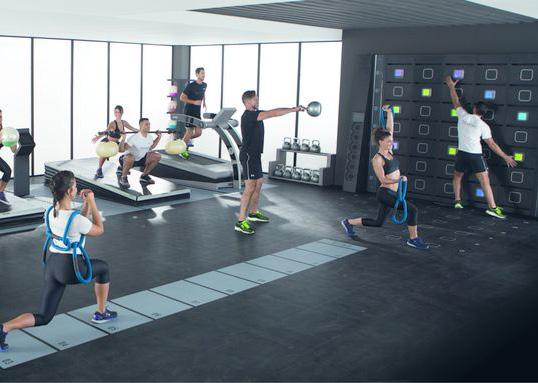
INDUSTRY CHANGES
The idea of offering fitness in private clubs has been around for many years; but today, it’s much more than having a few pieces of equipment in the basement of the clubhouse. “Clubs used to install a few treadmills in a small room so they could ‘check the box’ and say they offered fitness,” Alvezi recalls. “But that doesn’t work anymore. Today, clubs must provide a fitness facility that’s in line with what members are seeing at other gyms and health centers outside of their club...”
KEEP READING >>
EVOLVING EQUIPMENT

“Selectorized equipment and free weights don’t drastically change,” Alvezi remarks, “but cardio equipment is constantly evolving and has become more interactive than ever before.” Many cardio machines now boast “networked fitness” with the ability to track workouts and immerse users in a Virtual Active program. “Whether they wish to bike up the Alps or run along a lake in Arizona, users can select any destination they choose to truly personalize their experience...”
KEEP READING >>
INVENTIVE PROGRAMs

Just as clubs must offer modern equipment, they must also keep abreast of the latest trends in programming. “Multi-generational programs and small-group training are two really important areas of focus in the club industry right now,” Alvezi says. “It’s also important to develop cross-training programs to help golfers and tennis players with conditioning.” Some of the hottest trends? Keep reading to learn more about the latest in group exercise and inventive programs like Reaxing, ELDOA, and Wall Yoga
KEEP READING >>
CHAMBERSUSA .COM [ 9
WHAT’S TRENDING
Reaxing Studio
Virtual Active
Understanding the GM/COO Model of Management

With Insights from Dick Kopplin of Kopplin, Kuebler & Wallace
As the dynamic of private clubs continue to evolve, so too has the thought process on how to lead and manage them successfully. Certainly, traditional management methods have worked well in the past, as evidenced by the industry’s longevity and evolution over the last several decades. In recent years, however, the industry has recognized that the changing landscape may lend itself to a different type of management style—the General Manager and Chief Operating Officer (GM/COO) model.
So, what exactly is the GM/COO model and how is it affecting governance in private clubs across the country? For more insight, we spoke with two industry veterans—Dick Kopplin, Partner at Kopplin Kuebler & Wallace with over 45 years experience in the club industry, and Chambers Executive Vice President Skip Avery, a club manager himself for over 30 years and Past President of CMAA). Here, we discuss the benefits of this management style, why clubs are embracing it, and the challenges clubs may encounter when trying to make the transition.
KEEP READING TO LEARN MORE!
THE BASICS
Learn about the differences between the traditional, “three-legged stool” concept and GM/COO model to understand who sets policy, who establishes strategic direction, and who oversees functional implementation.
READ MORE >>
THE BENEFITS
Consistency, financial oversight, better communication, and improved talent—just to name a few. Learn how the GM/COO model helps keeps all club stakeholders moving in the same direction for a common purpose.
READ MORE >>
THE CHALLENGES
Change isn’t easy—but it’s necessary. Here, we acknowledge the most challenging aspects of making the transition to the GM/ COO model and offer solutions to help.
READ MORE >>
THE RESULTS
Improvements to financial results AND the member experience—really! Find out how.
READ MORE >>
C LUBVIEWBLOG.COM 10 ] DOWN TO BUSINESS
/ CLUBROAD ISSUE 18 / SPRING 2 018
Your bar talks–but what is it saying?
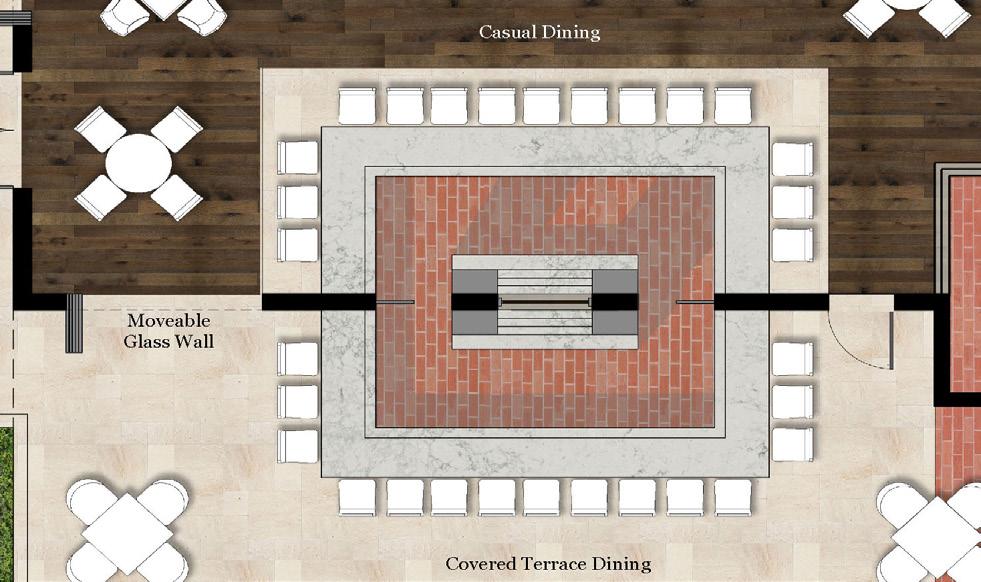
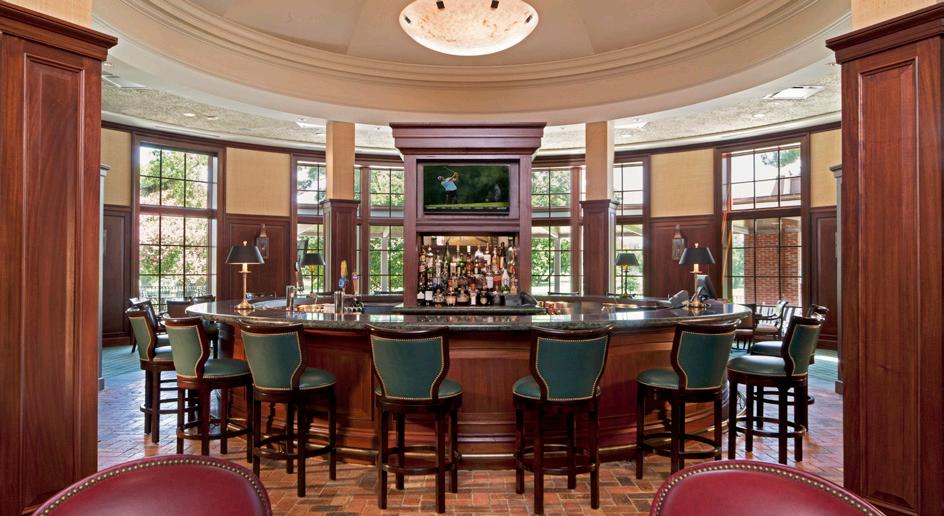
It’s a decade after the Great Recession and the private club industry is looking vastly different than it did ten (or even just five) years ago. As a club leader, you’ve come to the realization that lifestyles have evolved but your club’s dining experience hasn’t quite done the same—specifically, the atmosphere of your bar/ lounge space. It just feels a little lackluster—but why? Maybe the décor is somewhat outdated or the seating arrangements could be more inviting. Or could it be…the shape of your bar?
You read that correctly—the shape of your bar. While there are many design details that come together to create a desired aesthetic, bar shape is extremely important when it comes to the general flow of a particular bar, lounge, or dining space. And with bars becoming the epicenter of club activity—a true ‘must-have’ in facilities planning in today’s private clubs—it’s important to understand how a bar’s shape is directly correlated to its utilization. Here, we break down the pros and cons of the most common shapes—Straight, U-shaped, Circular, and Square. Which is the best option? That depends...Keep reading to find out more!
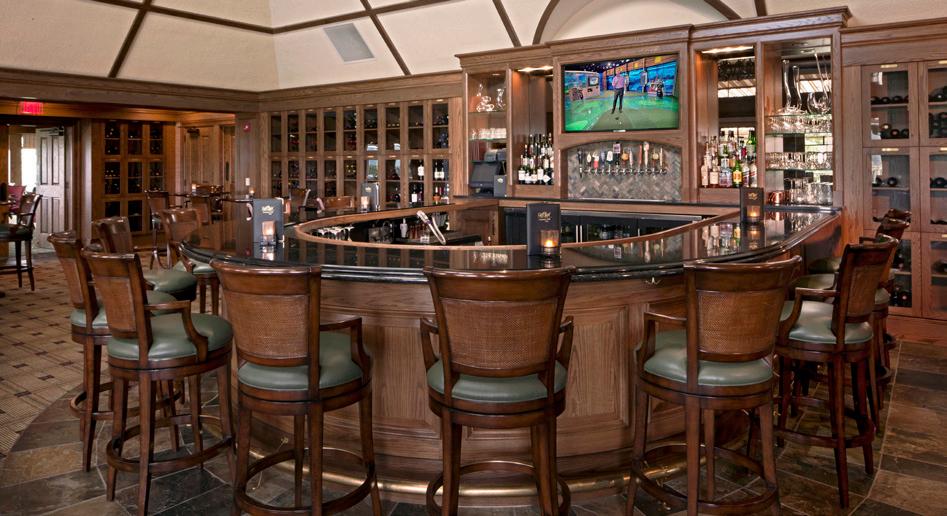
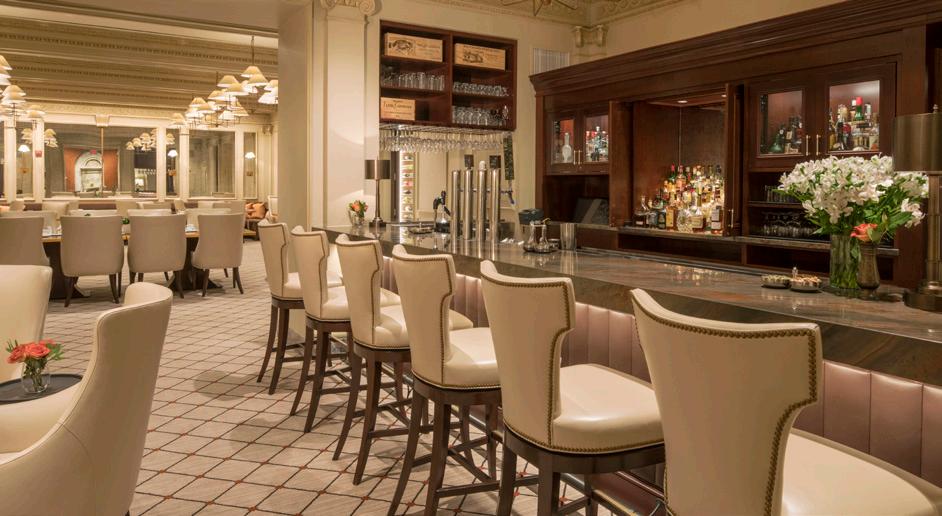


CLUB EXPERIENCE
square
straight circular u-shaped
click on each to learn more...
Bartender
Indoor Dining
Outdoor Patio
MEET THE MANAG ER
Private clubs are becoming increasingly dynamic as the industry continues to adapt to a changing and complex world—in part, thanks to the creativity and innovation enacted by individuals bringing a fresh yet respectful perspective to the modern private club experience.
In our last installment, we gathered insights from Traci Bichalski about embracing families, becoming female-friendly, giving back to the community.
In this issue, we spoke with Jeff Hartigan, GM/COO of The Oaks Club just south of Sarasota in Osprey, Florida. Jeff grew up immersed in the private club industry and brings nearly 15 years of professional experience to this role, including the prestigious title of CMAA Florida Chapter President for the 2016 year. His warm disposition brings a wealth of knowledge, compassion and forward-looking initiatives to The Oaks Club, while enhancing the overall culture and experiences within the club—for both its members and staff alike.
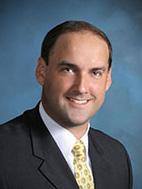

KEEP READING TO LEARN MORE!
Getting to Know JEFF HARTIGAN
GM/COO at The Oaks Club
CR: When did you first become involved with the private club industry?
JH: I was fortunate enough to grow up in the private club industry— although I may not have realized it at the time. My father, Greg Hartigan, is a recently-retired, long-time private club GM. I remember many of our family vacations coinciding with CMAA conferences [he chuckled]
I hadn’t always planned to pursue a degree in hospitality management. In fact, my childhood dream was to become a pilot... READ MORE >>
CR: How has your diverse hospitality background shaped your career?

JH: I’ve worked with a lot of really great managers and leaders in my career that have offered me multiple perspectives. I’ve had the benefit of working with visionaries in the industry—John Jordan (GM at Cherokee Town & CC), Bob Ley (GM at Palma Ceia), and certainly my father, who spent much of his career in Canada and overseas in the Orient, which offers me a unique perspective. But I also learned a lot from my hotel experience and have been fortunate enough to have really great strategic partners as Club Presidents during my... READ MORE >>
CR: How have you incorporated technology at The Oaks?
JH: Technology has been a growing part of our lives for years now—it’s all about weaving these advancements into our club experience...We’re seeing more of our senior members welcome technology to connect with family and friends from all over. With this in mind, we’ve started implementing video into our community outreach and marketing efforts. Videos that are 3-4 minutes long are extremely effective... READ MORE >>
CLICK HERE to read more of Jeff’s insights on his career, his experience as CMAA Florida Chapter President—and more!
/ CLUBROAD ISSUE 18
CHAMBERSUSA
12 ] CONNECT: BALTIMORE / DALLAS / MINNEAPOLIS / DC
.COM
MEET THE MANAGER




























